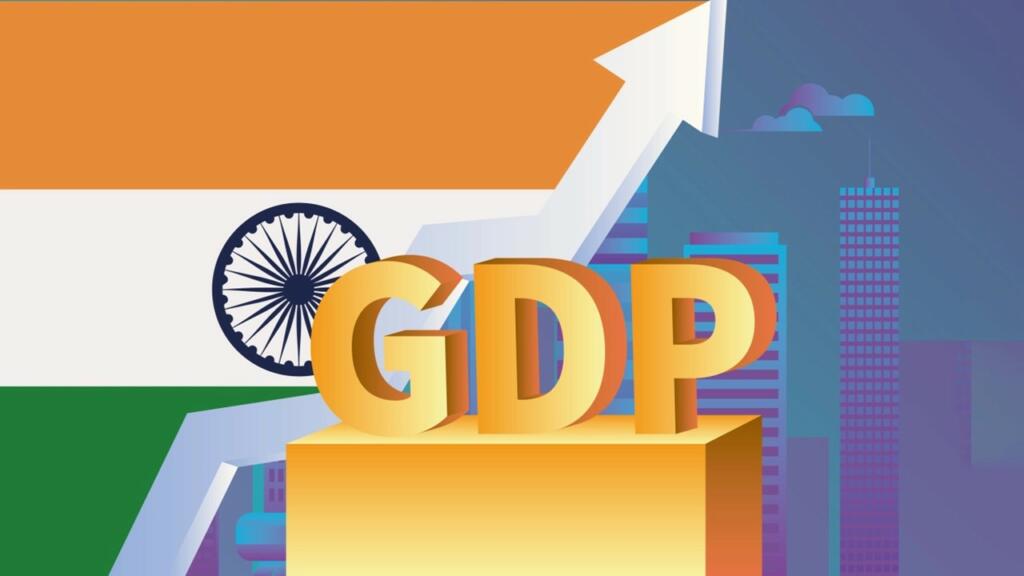In a significant development, the Indian government is all set to announce a major upward revision in its economic growth estimate for the current financial year, reflecting robust growth observed in various high-frequency indicators in recent months. The eagerly anticipated first advance GDP estimates by the National Statistical Office, scheduled for release on Friday evening, are expected to surpass the earlier projection, aligning with the Reserve Bank of India’s revised forecast of 7 per cent, up from the initial 6.5 per cent.
Analysts, surveyed by Bloomberg, anticipate a reading of 7.3 per cent for the fiscal year 2023-24. This optimistic outlook comes on the heels of the RBI’s Deputy Governor, Michael Patra, citing strong growth in high-frequency indicators data for October and November as a key factor behind the revised growth forecast.
The Indian government’s strategic increase in spending on infrastructure projects, coupled with lower consumer spending, has contributed to this economic surge. Industry experts posit that such fiscal measures could position Prime Minister Narendra Modi’ government favourably in the upcoming general elections scheduled for April-May 2024. Contrary to expectations, India’s economy exhibited a robust 7.6 per cent annual growth rate in the second quarter of the ongoing financial year, following a 7.8 per cent growth in the previous quarter.
This unexpectedly strong performance prompted major rating agencies, including S&P Global Ratings, Nomura, Citigroup, and Barclays, to upwardly revise their yearly growth estimates. Falling commodity prices, particularly in energy, have further fuelled India’s economic momentum. In December, the average price of India’s crude oil basket hit $77.42 per barrel, marking the lowest since July. Analysts believe that this decline in energy and commodity prices will empower corporations to enhance their profit margins, thereby positively influencing GDP growth in the foreseeable future.
India’s economic prowess shines as it outpaces its global counterparts and even surpasses its regional rival, China. Given Indo-China rivalry, China has always downplayed India’s growth story. Global Times, often regarded as the mouthpiece of the CCP, has published a series of hitjob pieces about India, featuring provocative titles that reflect a distinctly negative perspective. These include “India, wearing this label, really looks unsightly,” depicting India as a ‘graveyard for investments’; “Can India become the world’s third-largest economy?”, casting doubt on India’s economic aspirations; and “Reality and delusion of India’s ‘great power dream’,” an attempt to undermine India’s growing influence on the global stage.
While India showed an impressive GDP growth this year, China grapples with its second lowest GDP growth hitting ¥121.02 trillion ($17.94 trillion), a mere 3% increase from the previous year. Since India pivoted away from extensive trade relations with China and initiated the ambitious ‘Make in India’ project, there has been a remarkable surge in economic growth. This growth trajectory positions India to surpass China in the economic race. China’s economic slowdown, attributed to its poor zero-Covid policy, the real-estate crisis, and reduced global manufacturing demand, accentuates India’s exceptional economic trajectory, marking a historic shift in the dynamics of the two economic giants.
S&P Global Ratings has now positioned India to remain the fastest-growing major economy for the next three years, projecting it to become the world’s third-largest economy by 2030. Despite being currently ranked as the world’s fifth-largest economy, S&P expects India to achieve a growth rate of 6.4% in the current fiscal year, with a further uptick to 7% projected by fiscal year 2027.This growth not only symbolizes India’s dominance but also underscores its resilience and strategic economic initiatives. Economists suggest that the Reserve Bank of India’s Monetary Policy Committee (MPC) is unlikely to reduce the benchmark policy rate, currently at 6.5%, in the coming quarters.
India’s impressive economic growth trajectory, fuelled by prudent fiscal policies and strategic initiatives, positions it as a formidable contender in the global economic landscape. The prospect of outpacing China underscores the significance of sustained efforts and policies fostering economic resilience and development.
